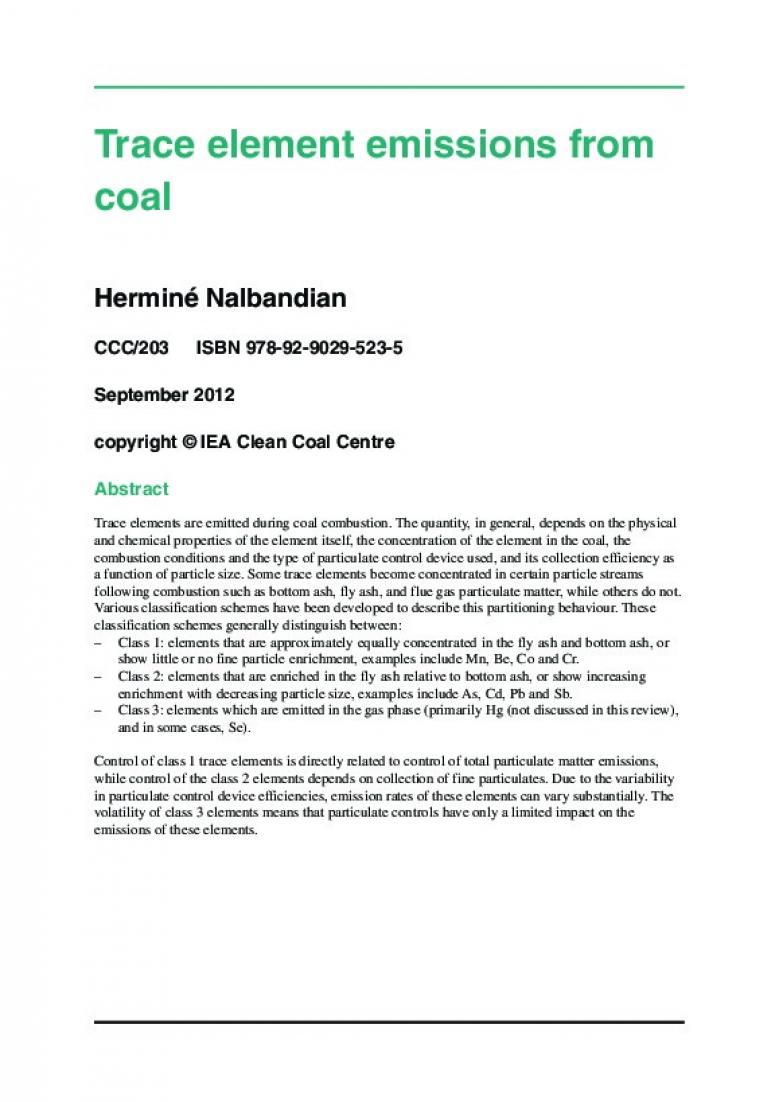CCC/203 ISBN 978-92-9029-523-5
September 2012
copyright © IEA Clean Coal Centre
Abstract
Trace elements are emitted during coal combustion. The quantity, in general, depends on the physical
and chemical properties of the element itself, the concentration of the element in the coal, the
combustion conditions and the type of particulate control device used, and its collection efficiency as
a function of particle size. Some trace elements become concentrated in certain particle streams
following combustion such as bottom ash, fly ash, and flue gas particulate matter, while others do not.
Various classification schemes have been developed to describe this partitioning behaviour. These
classification schemes generally distinguish between:
– Class 1: elements that are approximately equally concentrated in the fly ash and bottom ash, or
show little or no fine particle enrichment, examples include Mn, Be, Co and Cr.
– Class 2: elements that are enriched in the fly ash relative to bottom ash, or show increasing
enrichment with decreasing particle size, examples include As, Cd, Pb and Sb.
– Class 3: elements which are emitted in the gas phase (primarily Hg (not discussed in this review),
and in some cases, Se).
Control of class 1 trace elements is directly related to control of total particulate matter emissions,
while control of the class 2 elements depends on collection of fine particulates. Due to the variability
in particulate control device efficiencies, emission rates of these elements can vary substantially. The
volatility of class 3 elements means that particulate controls have only a limited impact on the
emissions of these elements.
| Attachment | Size |
|---|---|
| 850.96 KB |


